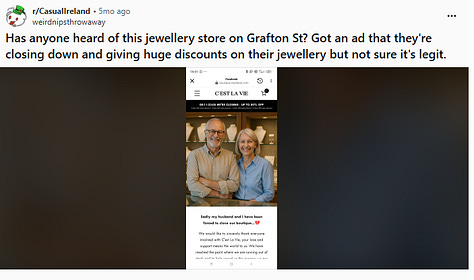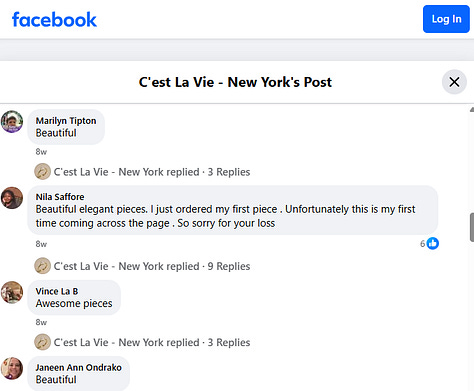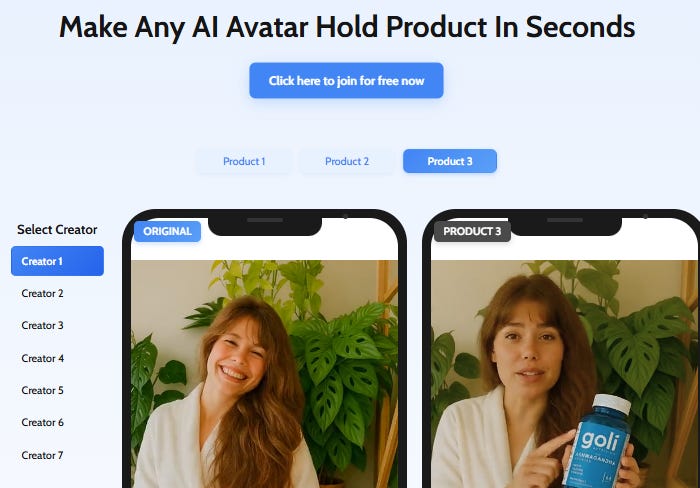The New Holiday Shopping Hustle
Spot AI shopping scams, read third party trust sites the right way, and pay safer
It started with a grieving shop owner and an 80%-off “final days” sale.
The boutique’s site looked local and human.
There were smiling owner photos, a cozy backstory, and the whole vibe of a quaint neighborhood shop. Check it out for yourself:



So what’s the problem?
The story was fake. There was no widow and the jewelry story was a pop-up ecomm store likely run out of China. The creative, sappy story helped persuade potential buyers why the jewelry was so heavily discounted. As an added bonus, a buyer would feel good with their purchase thinking they were supporting a widow. Checkout the replies to the Facebook post here to see how effective the ruse was.
This is not a lone incident, unfortunately. UK watchdogs have since flagged a wave of “British-looking” and “local-sounding” brands that actually ship cheap goods from overseas warehouses and make returns painful or expensive. UK regulators even banned ads from one such “brand” (Marble Muse) for implying a UK presence while fulfilling from Asia.
As we enter the Christmas and end of year shopping season, readers should be aware of these new misdirection techniques and how to avoid getting duped.
What Changed (and Why Your Feed Feels Riskier)
Two forces collided this year: production quality and scale.
AI can turn a single product image (or a text prompt) into a slick video ad that looks like it came from a legit label. The old “that looks fake” cues are disappearing, and scammers churn through fresh store names to stay ahead of moderation. Even experienced shoppers are getting duped because the ads look (and feel) real. (source)
AI avatars (effectively realistic cartoon characters) promoting AI generated products are starting to take over the top social media platforms, particularly TikTok. There’s even a startup company that markets this as a service to content creators. See these screenshots below or watch a short video of it in action here. You’ll never look at online influencers and video testimonials the same way again.


AI avatars are effective because our brains are wired to lock onto faces and voices.
A talking “person” looking into the camera feels more trustworthy than a static image or a text graphic, so viewers stop scrolling and listen. Seeing hands hold or use a product also helps people imagine ownership and use, which nudges them toward buying.
Add smooth lip-sync and natural gestures, and the message is easier to process than a slide or a disembodied voice. It “feels” more credible.

How People Are Getting Burned (What This Looks Like in the Wild)
Just a few years ago, the biggest online holiday shopping pain was fear of a package arriving late.
That’s outdated. The new risk is fake or nonexistent retailers and products. Here’s what we’re seeing:
Story-first, quality-last. Sites pose as family-run boutiques with warm portraits, union-jack-style aesthetics, or “closing down” narratives. They then route returns offshore and deliver resin trinkets or garments that barely resemble the ad. The emotional hook (“widow’s final sale,” “local artisans”) lowers your guard and speeds the impulse click.
AI-polished ads that erase the usual tells. Reporters and creators testing these products describe ads built from AI images, then animated into convincing try-ons or lifestyle clips. That dress (or gadget) you saw may never have existed as shown. The storefront looks professional. Unfortunately fulfillment often is not.
Fake endorsements that move fast. The Better Business Bureau (BBB) is warning that scammers now deploy AI “celebrity” videos pushing too-good-to-be-true deals. If you can’t find the same promo on the celebrity’s verified page, treat it as a fake until proven otherwise. (KUTV)
Refund runarounds and “keep it, pay a little more.” After a disappointing delivery, some sellers propose partial refunds, or make international returns so costly you give up. Consumer complaints show the same trap over and over. (ASA)
Review smoke screens. Shady shops try to launder their reputation with floods of generic 5-star reviews. Trustpilot removes manipulative content and flags suspicious activity, but bad actors still game the system. Read reviews with a skeptical eye and look for patterns (more on how below). (Trustpilot Help Center)
Bottom line: the ad can be beautiful, the story moving, and the site “professional” and still be fake, or at best of poor quality.
Safer Ways to Try An Unfamiliar Brand
Don’t buy from the ad. Open a fresh tab and triangulate.
Start with BBB and Trustpilot.
Scan BBB’s profile/Scam Tracker for recurring issues (late shipping, no refunds, overseas returns). On Trustpilot, don’t fixate on the star average, instead, read the most recent and 1-star reviews for patterns like “nothing like the photos,” “returns to Asia,” “partial refund offers,” or “keep it, we’ll discount the next one.” That’s the warning sign you need to see.
Then layer in a couple of quick checks:
Keep reading with a 7-day free trial
Subscribe to Secrets of Privacy to keep reading this post and get 7 days of free access to the full post archives.


